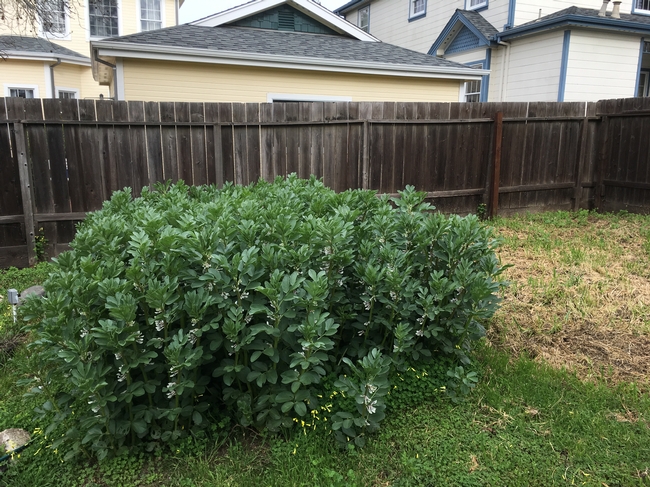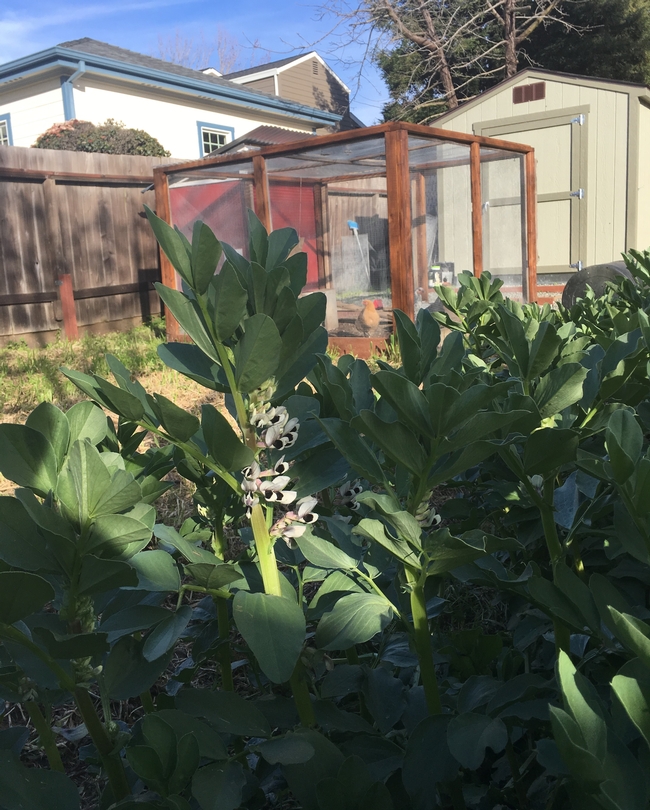Fava Beans
Fava beans are easy to grow, forgiving and delicious. I planted some in the fall of last year and they went through the winter just fine. Flowering is in full force and the first little bean pods are starting to form. You can plant favas closely spaced and use them as a nitrogen-fixing cover crop. Or space them a little wider and grow them for food. Either way your garden gets the advantage of the symbiotic relationship between the fava roots and the Rhizobium bacteria that fix atmospheric nitrogen in root nodules. The nitrogen helps feed the favas and after you harvest your crop there is excess left behind in the crop residue and roots to enrich your garden soil. I'm going to eat my favas three ways. Right now you can harvest the tops including some flowers and use them like you would use pea shoots. Raw in salads, steamed, or quickly stir fried in a little oil with salt and maybe some garlic? When the pods are young they can be eaten whole like you would snow peas, or let the pods mature, shell them and eat them as you would a shelling pea. From what I read you could also let them mature and harvest them after they have dried and keep them to use as a dry bean. I doubt there will be any left for dried beans by the time I'm through. The major pest is aphids in the fresh young shoot tips, so I better get those off and eaten before the aphids show up.
The only downside so far is that I can't let the chickens out to roam the backyard because those little monsters love fava leaves and flowers and will wipe them out in no time.

Fava bed. (photos by Stan Zervas)

Fava close up.
Comments:
It took me a few years to realize that the if I remove the inner cover, the interior green bean taste much better.


It is my understanding that for purposes of amending the soil and adding nitrogen it is best to incorporate the plants into the soil while they are flowering and before they start producing beans.
Also fava beans are a favorite overwintering host of the immature thrips responsible for tomato spotted wilt virus, so it is best to remove them (til them in) at least a month or so before you plant tomatoes in the area.
Posted by Steve Radosevich on March 26, 2017 at 1:14 PM